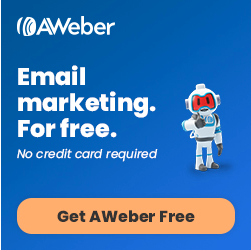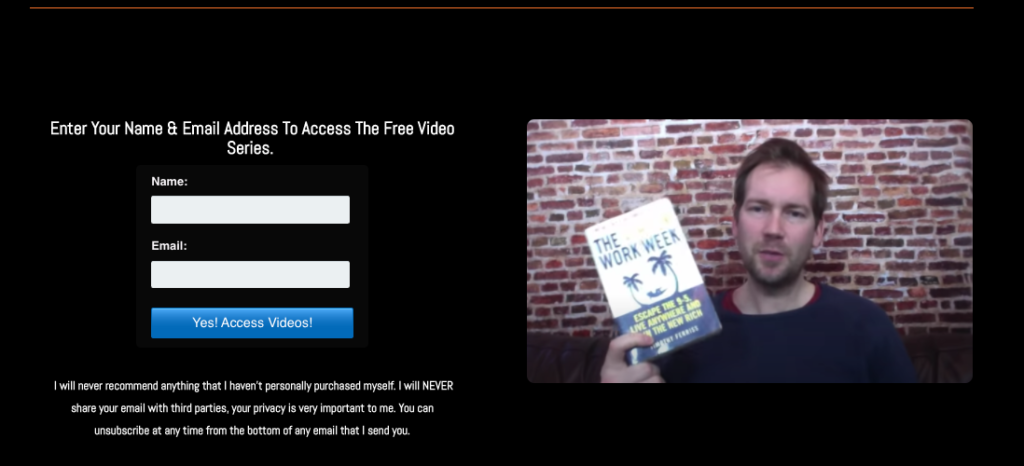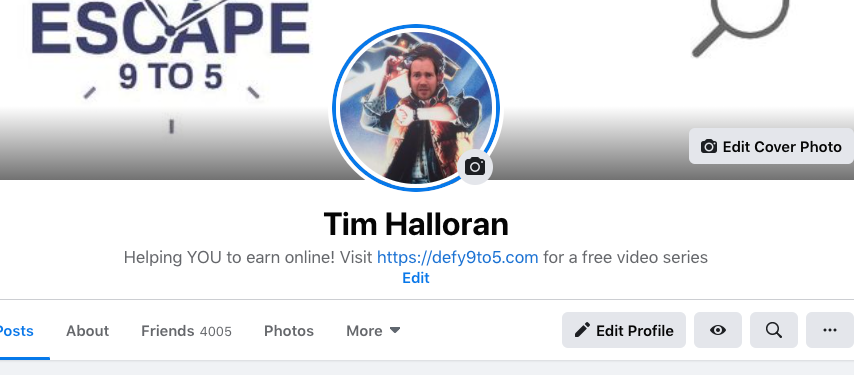(DOWNLOAD AFFILIATE MARKETING STRATEGY PDF DOCUMENT HERE)
In this affiliate marketing strategy PDF I’m going to share some of the most popular affiliate marketing tactics. There’s many ways to promote affiliate products. According to your own personal preferences, available time and budget, you should choose accordingly.
Top strategies include PPC – (pay per click marketing), organic marketing methods such as blogging and v’logging (video blogging) and email marketing.

You can also do a combination of more than one strategy too. But it’s often recommended to choose a strategy and get good at it before jumping on to another one. That way, you actually get some traction with your strategy first and don’t fall prey to “shiny object syndrome”.
Shiny Object Syndrome means you’re always looking for an easier solution to product promotion/affiliate marketing. As such you can easily get stuck in the constant search for the “perfect solution”; which of course doesn’t exist in affiliate marketing.
Affiliate Marketing Strategy PDF – Blogging
I’m going to start off with blogging because it’s a cheap strategy anyone can do. If you want a steady stream of affiliate sales for free, you’ll need to become a content creator. Paid marketing is of course much faster and often more reliable. Blogging on the other hand is a slow strategy which can take months before you see any tangible results. If you enjoy blogging though, and have a topic which you are passionate about, blogging can be a good strategy. But expect to put in several months of regular content creation. Depending on your chosen topic, it can take even longer to generate results from blogging.

See also how long does it take to make money blogging.
You can even blog for free using free platforms such as WordPress, Blogger.com or Hubpages. If you’re serious about making money through blogging though it’s well worth building your own website. On a free platform it can be more difficult to get free traffic from the search engines. Google, and other search engine platforms rate owner domain names and give them more authority than free blog platforms. See also this article for details of setting up your own website.
Affiliate Marketing Strategy PDF – Email Marketing
Email marketing can be used in conjunction with pretty much any other marketing strategy. You can use email marketing with blogging, pay per click marketing and even social media marketing. It’s a useful tool which every affiliate should use. When I started using email marketing my results skyrocketed! Before this I was trying to sell directly from a website which is much more difficult.

On a website someone only has a few minutes to make a buying decision. Most people need at least a few “touch points” with a product before they make this decision. Email marketing lets you extend the time period of “getting to know you” of your customer. Through email marketing you can build a list of subscribers and build a relationship with them over the longer term. It’s much harder to do this on a website.
A blogger can build their email list by offering something to giveaway on their website, such as an ebook or pdf download. From a paid marketing platform, affiliates can send traffic directly to a landing page and collect subscribers information by giving something valuable in exchange. Whatever form of marketing you’re using, do email marketing! Here’s a link to a free autoresponder you can use to get started.
PPC – Pay Per Click/Paid Marketing Platforms
PPC or pay per click marketing is the fastest and most scalable form of marketing for affiliates. However before you can scale up an affiliate business, it’s important to know your numbers and already be profitable. Many affiliates spend upwards of $20k a month on marketing but they don’t start at such a large amount. They usually start testing their advertising at a low daily budget. Once they see their campaigns working, they slowly increase it, testing and measuring while they do so.
PPC platforms include:
- Google Adwords
- YouTube
- Bing
- And Many Other Social Media platforms

Many affiliates will try a paid strategy and give up shortly afterwards because nothing happens. So it’s important to realise that not every campaign you run will be profitable immediately. The benefit of paid marketing is that you can see very quickly whether something is working or not. While with organic content marketing, you can work for a long time before seeing whether your efforts will be rewarded, or not!
Paid marketing is also much more scalable than organic content marketing. If a certain piece of content does well, you can’t necessarily translate this success to newer content. But with PPC, once you have a successful campaign, you can easily increase your budget to put your ad in from of a larger audience, knowing that it already works!
Affiliate Marketing Strategy PDF – Paid Marketing & Email Marketing
Many affiliates use PPC campaigns in conjunction with email marketing. They send targeted traffic to landing pages and collect email subscribers by offering something to their visitors. This is a very effective form of marketing because you have a scaleable strategy (PPC) and a follow up strategy to help build relationships over the longer term.
From an advert placed on YouTube, for example, a clickable link takes visitors to a landing page which offers to deliver a series of emails helping them solve some problem.

On the landing page, the visitor only has two options: sign up to the free material or leave the page. This is far better than sending traffic to a website where people can browse around and not take a specific form of action. Once you get an email from your visitor you can continue to follow up with them, offering value in your emails and promoting affiliate products.
YouTube Organic Marketing
Many affiliates will build an organic marketing campaign using only YouTube. This takes a lot of time and effort and you’ll need to upload videos on a regular basis to YouTube. Over time and through optimising your videos for specific keywords which relate to your business/products, you can attract a growing audience for free!
Depending on your particular topic, it can take weeks, months or years to generate enough traction to make a consistent income from affiliate marketing. In a competitive topic it will likely take a lot longer than in an uncompetitive topic because of the competition on the platform for videos of a certain nature.
If you enjoy making videos and are a good presenter or talker, this might be a suitable strategy you can use to promote your affiliate products. You need to create videos which will attract an audience who will relate to the products and services you are promoting.
Affiliate Marketing Strategies PDF – SEO
SEO or search engine optimisation can be used with any online content you create but it’s more relevant for content creators like bloggers and organic YouTube marketers.
Through optimising content you put on your website (or on YouTube) you can attract the attention of the organic search results and get free traffic.
Although good SEO doesn’t always mean you’ll rank on the first page of Google, it’s a useful strategy if you’re going for any kind of organic reach. As you create more and more content, if your content is SEO optimised it will have more impact and get more attention. Google uses a number of factors to rank content and determine where to place it in the search results:
- Content quality and volume of content
- Number of back links pointing to your site
- Age of the domain name (with a website)
- Website authority
- How visitors interact with content
- Your link profile, what rate they are added and where are they from
- And many other factors
Using Social Media Sites For Traffic
There are many social media sites which can be used to attract traffic to affiliate products too. Here’s just a few of them:
- YouTube
- Tumblr
- TikTok
- Snapchat
- etc
Here’s a simple facebook strategy you can use to attract more people to your products.
Affiliate Marketing Strategy PDF – Using Facebook For Traffic
First set up your Facebook profile with a link to your main website. You can also showcase your ebooks if you have any on your Facebook profile. Once you’ve done this you should have a profile which clearly defines you, what you offer and who you can help with your products/service.

When complete you can then join groups which are relevant to your target audience (more on this later). Ideally find groups which are relevant to your product in some way. So if you’re selling fitness products then you would join fitness related groups.
Once joined you can interact with members of the groups. Don’t spam them with your links, simply interact and help people with their problems. Spend some time daily doing this and over time people will gravitate towards you, especially if you have a good picture on your profile. As they see your profile, some will visit your website and/or sign up to your offers.
Using Quora For Traffic
If you’ve already set up an affiliate website, it can be a struggle getting people to see your content. A simple strategy to get more website visitors is through using the Q and A website Quora.com.
On Quora there’s many questions you can answer which are relevant to your products and services. Find questions which will likely be a good match for your potential customers. Answer them fully on the site and link back to content on your website which helps further answer questions.
You are allowed to do this on Quora.com, providing you offer value first on the site itself and don’t just spam Quora with your links! See also affiliate marketing on Quora.
Your Target Audience

Knowing your target audience as an affiliate marketer can save you a tonne of time and effort. Your “target audience” is that slice of the marketplace who are most likely to purchase your product or service.
You can determine this by looking at your existing customers and finding some common traits. For example, a local DIY store might have an audience of over 35 year olds as their main demographic.
They will also live close to the store if it’s a physical location. Running a global advertising campaign for a local store will likely waste a lot of money. In this scenario it’s far better to target locally based people over a certain age (35), since you’ll waste much less advertising budget on your correct demographic.
A local store is a simple way to explain target audience. For a globally based business, it can get more complicated. Advertising platforms can narrow down your audience based on many demographics:
- Age
- Location
- Sex
- Interests
- Connections
- Pass times
- etc.
The more you understand your target audience/perfect customer, the better able you are to focus your advertising dollars on the right slice of the marketplace and make your adverts count!